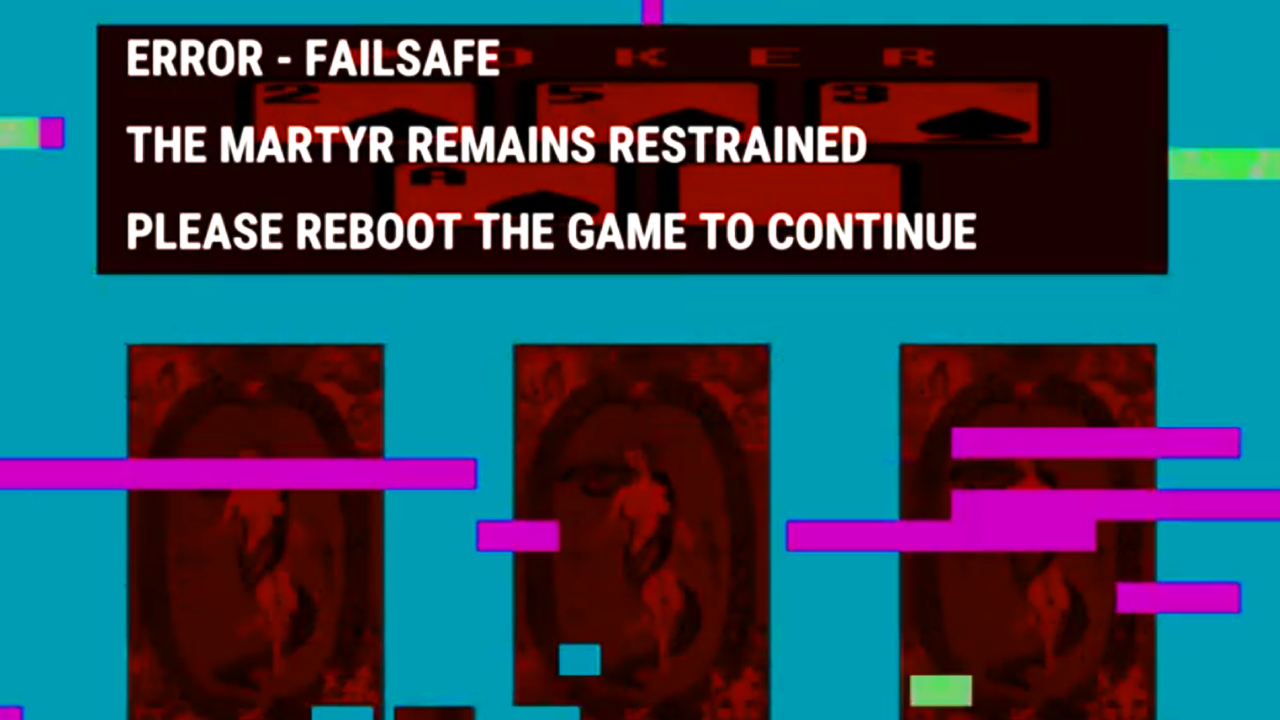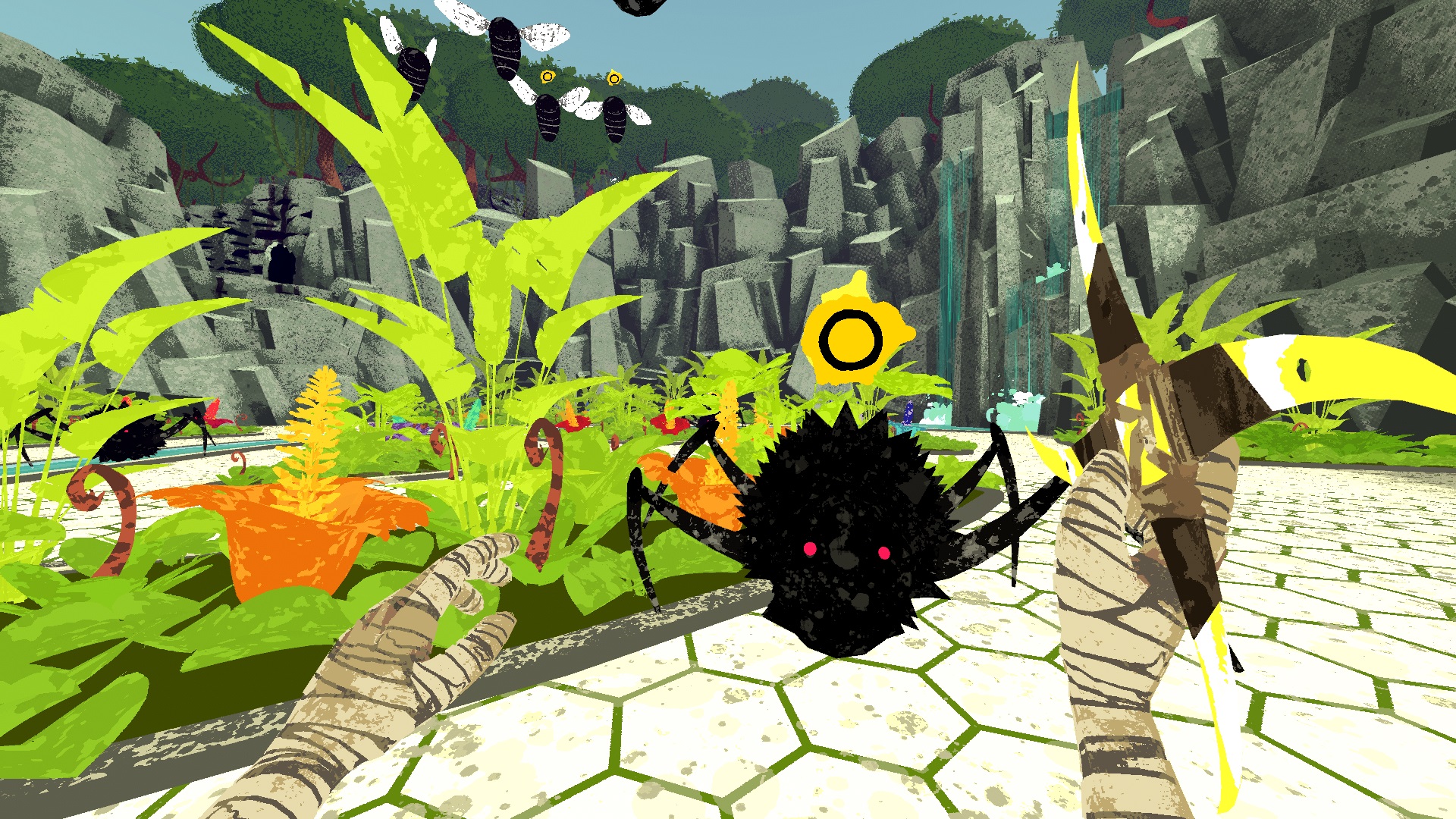Share
Into the abyss
Darkness surrounds you on all sides save for a single object casting a weak glow on a cold grey stone floor. A magic dagger, seemingly burning in appearance, floats ominously in front of you. Your hand is outstretched as if to take this mysterious relic, and, perhaps with a little courage, you move to take the dagger and make it yours.
In doing so you are immediately transported to an arena where the full weight of this Faustian bargain will come to pass. An endless legion of demons is coming and you will be sorely tested as you fight, die, and fight again.

Damned if you do, Damned if you don’t
Devil Daggers, made by Sorath, is directly inspired by 90s first-person and arcade shooters that place an emphasis on skillful play and having a knowledge of the game’s mechanics to progress further. Level progression is handled via a timer, where the longer you live the more difficult the enemies become. There are more than a dozen enemies to test your mettle against and the small, circular arena will make you intimately familiar with them.
Armed only with the magical dagger you took at the beginning of the game, your power increases by collecting gems you get through killing enemies (which also happens to be their weak points). One of the ingenious things about the game’s design is how these gems function both as a resource and a detriment. While firing, players cannot collect gems, and in order to power up your dagger, you need to stop firing just long enough for the gems to pull themselves toward you. While in practice this delay might not seem very long, it leaves players vulnerable to attacks from the front and forces them to rely on evasion alone. Throw in enemies like the SPIDER, which feasts upon unclaimed gems to spawn SPIDERLINGS, and this makes player progression a literal life or death scenario.

While there is technically a boss in the game, killing LEVIATHAN and ORB does not end the game, and the defeat of these enemies (while impressive) summons even more hellish entities like THORN and the GHOSTPEDE to challenge the player further.
For new players, Devil Daggers will be incredibly daunting. It is punishing and can feel overwhelming at times, but that’s part of its charm. There are no checkpoints or continues in this game – death is permanent, and all it takes is for a single enemy to touch you once to send you back to the beginning of the game. One of the game’s underlying focuses is on getting better over time. When you first start out, you will not be familiar with enemy behaviors, tactics, and best practices for powering up your dagger and surviving. Death is a teacher in this regard – as you face more enemies and their stronger versions, you will need to adopt new strategies, learn what to prioritize, and, above all else, keep trying.
A low-poly nightmare
While the look is reminiscent of 90s PC shooters like Quake or Doom, Devil Daggers was made with a custom-built game engine, hand-crafted sound, and art that transforms the minimalist shooter into a truly hectic, terrifying experience. The player (represented by a single outstretched, glowing hand) is pitted against endless hordes of increasingly monstrous enemies. There is no escape and, even though you may kill hundreds of them, they will eventually kill you. The game is primarily colored in brown hues with minor accents of green or red, and this limited palette is perfect for conveying the dark tone of the game. The perpetual darkness and limited light cast from your hand also add to the increased sense of claustrophobia as more and more enemies populate the arena and fill your field of vision.

The enemies themselves all follow a central theme based around skulls, with the most basic enemy being a simple, floating skull to some of the more advanced enemies being composed of skeletal limbs and vertebrae attached to horned skull visages.

With each enemy having its own unique tactics and behaviors, it forces the player to constantly be aware of what’s attacking them. There’s a desperate focus involved on the part of the player to not only identify what they’re fighting but to keep a steady rhythm of attack and evasion. Any sort of slip up in this regard will bring a quick demise.
With the color palette and nightmarish appearance of the game’s antagonists, the visual design of the enemies all hammer home the idea that death is an ever-present force in the game and it’s not a matter of if you die, it’s when.
What you can’t see can hurt you
One of the game’s primary elements is its sound design. Every sound featured in the game serves to exacerbate the atmosphere of dread while also providing the player information organically. The only “music” to be found during gameplay is the overlapping shrieks, gurgles, and laughter of your enemies but this also notifies the player when enemies are spawning, how close they are, and when they’ve been killed.
These audio cues are important in communicating where enemies are. It is entirely possible to know where a SPIDER is spawning into the arena, when a SKULL is about to take a bite out of you from behind, and when a CENTIPEDE is getting ready to erupt from the ground purely through the sounds they make. These noises serve to direct the player into making snap decisions throughout gameplay (do you branch off and deal with the SPIDER that just spawned, or do you kill the SQUID before it spawns another wave of SKULLs?) without taking them out of the experience.

It should also be mentioned that the sounds are all dreadful. SQUIDs emit a low droning noise followed by a fleshy, peeling sound that tells players when it is vomiting out SKULLs.
SKULLs rattle their way toward the player with increasingly frustrating persistence, while stronger versions will audibly laugh the closer that they get.
Gems create a high-pitched chime to let you know that you’ve collected them and as you collect more, your daggers will fire outward with increasing frequency until they become an audible, distorted wail.
The end is just the beginning
While it is fair to say that less is more, Devil Daggers uses minimal assets to great effect, and conjures panic and fear without the need for jump scares or a deep plot. It is simply a game of survival against insurmountable odds that invites you to keep trying again and again.
With a leaderboard that offers a full top-down replay experience, players are encouraged to compete for who can survive the longest, and the strategies employed in this way are shared with the game’s global audience. In this way, even though you are fighting alone, you never truly are.
Currently, the world record for Devil Daggers is 1131.0587 seconds (18.85 minutes) as of June 30, 2020. Considering that the game’s boss spawns at the 350-second mark and the final enemy type spawns at the 450-second mark, that’s a lot of time to be fighting, and the recent record serves as a testament to the game’s replayability and dedicated fanbase that records are still being broken today.




